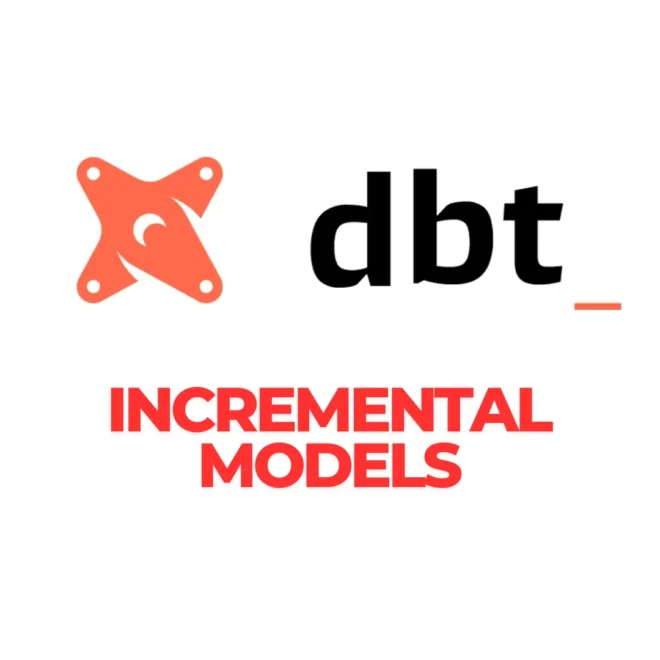Managing large fact tables in data warehouses presents significant challenges, particularly concerning performance and efficiency. dbt (data build tool) offers a solution through incremental models, which process only new or changed data rather than reprocessing entire datasets. This article explores how to build incremental models in dbt to handle large fact tables effectively.
Understanding dbt and Its Role in Data Transformation
dbt is an open-source tool that enables data analysts and engineers to transform data in the warehouse more effectively. It allows users to:
- Write modular SQL queries
- Test data integrity
- Document data transformations
This streamlines the analytics engineering workflow.
Challenges of Handling Large Fact Tables
Large fact tables can contain billions of rows, making full data reloads:
- Time-consuming
- Resource-intensive
- Expensive
Frequent full refreshes can lead to higher costs and slower performance, hindering timely access to business insights.
What Are Incremental Models in dbt?
Incremental models in dbt process only new or updated records since the last run. These records are appended or merged into the existing table.
✅ Benefits:
- Efficiency: Processes only changed data
- Cost-Effective: Reduces compute usage
- Timeliness: Enables frequent updates
Configuring Incremental Models in dbt
### 1. Defining the materialized='incremental' Configuration
{{ config(
materialized='incremental'
) }}
This tells dbt to materialize the model incrementally.
2. Utilizing the is_incremental() Macro
{% if is_incremental() %}
-- Incremental logic here
{% endif %}
This ensures that specific logic only runs during incremental updates (not during a full refresh).
3. Filtering New and Updated Records
Use a timestamp or unique key to select only the relevant records:
SELECT *
FROM source_table
WHERE updated_at > (SELECT max(updated_at) FROM {{ this }})
4. Setting the unique_key
{{ config(
materialized='incremental',
unique_key='id'
) }}
This key helps dbt update existing rows instead of inserting duplicates.
Implementing Incremental Strategies
📌 Append Strategy
Best for immutable data:
SELECT *
FROM source_table
WHERE created_at > (SELECT max(created_at) FROM {{ this }})
🔁 Merge Strategy
Best for mutable records. Requires a unique key and uses MERGE/UPSERT:
{{ config(
materialized='incremental',
unique_key='id',
incremental_strategy='merge'
) }}
📂 Insert Overwrite Strategy
Best for partitioned tables. Overwrites partitions:
{{ config(
materialized='incremental',
incremental_strategy='insert_overwrite',
partition_by='event_date'
) }}
Handling Schema Changes in Incremental Models
– Ignore Schema Changes (Default)
{{ config(
on_schema_change='ignore'
) }}
– Append New Columns
{{ config(
on_schema_change='append_new_columns'
) }}
– Sync All Columns
{{ config(
on_schema_change='sync_all_columns'
) }}
Best Practices for Building Incremental Models
- ✅ Ensure reliable timestamps or unique identifiers
- 🔁 Manage updates and deletes with merge logic or soft delete flags
- 🔍 Apply tests:
unique,not_null, and custom validations - 📅 Schedule regular runs and monitor test results
Optimizing Performance of Incremental Models
✅ Use Partitioning & Clustering
- Partition by
event_date,created_at - Cluster by
user_id,product_id
✅ Create Efficient Indexes
Where supported, index frequently filtered/joined columns.
❌ Avoid Full Table Scans
Use WHERE clauses in incremental logic.
Common Pitfalls and How to Avoid Them
| Pitfall | How to Avoid |
|---|---|
| Data inconsistency | Use reliable keys and timestamps |
| Misconfiguration | Double-check unique_key, incremental_strategy |
| Performance issues | Monitor, index, and partition wisely |
Case Study: Real-World Implementation
Scenario
A retail company had a sales_fact table with over 3 billion rows. Full refreshes took 3 hours.
Steps Taken
- Used
updated_atandtransaction_idfor filtering - Implemented merge strategy
- Partitioned by
transaction_date - Configured
on_schema_change='sync_all_columns'
Results
- Reduced runtime from 3 hours to 15 minutes
- Cut compute cost by 80%
- Enabled near real-time reporting
Conclusion
Building incremental models in dbt is a powerful strategy to manage large fact tables. With the right setup and best practices, you can dramatically reduce costs, increase speed, and improve data freshness.
FAQs
Q1: What is the main advantage of incremental models in dbt?
They process only new or updated data, reducing compute and time.
Q2: How do I choose the right incremental strategy?
- Use append for immutable records
- Use merge for updates
- Use insert_overwrite for partitioned tables
Q3: Can dbt handle schema changes automatically?
Yes, use on_schema_change='sync_all_columns'.
Q4: What are the limitations of incremental models?
Requires careful configuration to avoid data loss or duplication.
Q5: How often should I run incremental models?
Based on freshness needs—anywhere from hourly to daily.
Q6: Can I force a full refresh?
Yes, use the --full-refresh flag.
